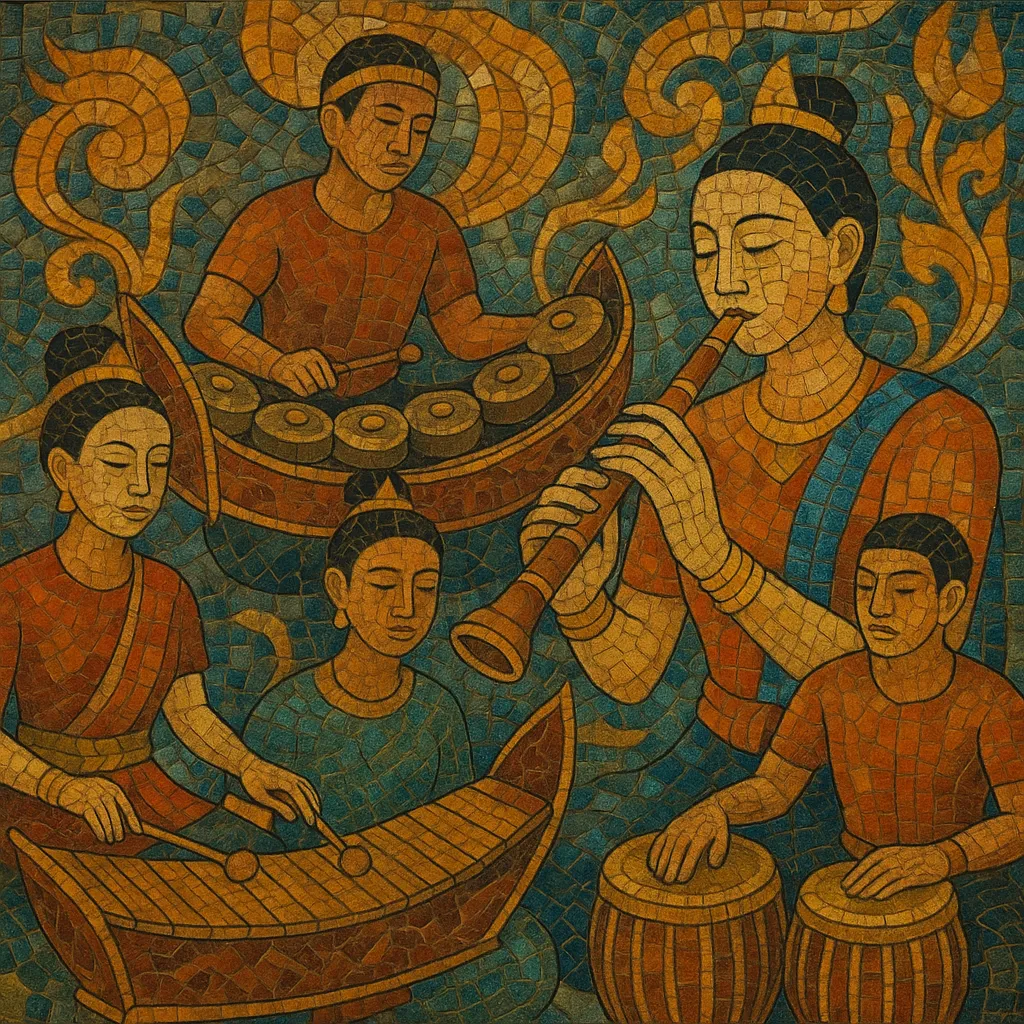Thai music refers to the diverse musical traditions and styles of Thailand, spanning courtly classical ensembles, regional folk idioms, and modern popular forms. It is unified by characteristic gong–chime timbres, cyclical percussion patterns, ornamented vocal lines, and an emphasis on heterophonic ensemble texture.
Classical traditions such as piphat, khrueang sai, and mahori developed in royal and temple contexts, using instruments like the pi nai (reed oboe), ranat ek (xylophone), khong wong (gong circle), taphon and klong that (drums), and ching (small cymbals). Regional musics—especially Isan/Lao mor lam with the bamboo mouth organ khene—interweave poetic verse, call-and-response, and dance rhythms. From the mid‑20th century, Thai music embraced Western harmony and instrumentation, birthing luk thung, phleng phuea chiwit, T‑pop, rock, hip hop, and indie scenes that retain Thai melodic contour and prosody while adopting global production techniques.
Thai musical identity coalesced between the 14th and 18th centuries, when court, temple, and theatrical traditions matured under the Sukhothai and Ayutthaya kingdoms. Gong–chime orchestras, reed oboes, xylophones, barrel drums, and time‑marking ching patterns formed the core of piphat, while string‑centered khrueang sai and mixed mahori ensembles served chamber and theatrical purposes.
Regional exchange with Khmer, Mon, Lao, and Malay cultures, along with Buddhist liturgical practices and older Indic ideas of modality and rhetoric, shaped repertoire, tuning, and performance etiquette. By the late Ayutthaya period, large cyclic pieces and stylized dance‑drama accompaniment were firmly established.
In the 19th century Bangkok (Rattanakosin) court, musical lineages codified pedagogy, tuning conventions (a near‑equidistant seven‑tone collection), and repertories for masked dance (khon), shadow theater (nang), and classical dance (lakhon). Masters such as Luang Pradit Phairao and later Montri Tramote preserved and arranged canonical pieces while composing new ones for modern stages and radio.
Meanwhile, regional folk practices flourished: Isan/Lao mor lam vocal arts paired with the khene; Lanna repertoires emphasized plucked and bowed strings; southern traditions integrated ritual dance and drum ensembles. These local idioms fed performers and material into the national soundscape.
From the 1930s onward, Western instruments and harmony entered Thai music via military bands, schools, and broadcasting. Urban salon pop (luk krung) and rural‑rooted luk thung crystallized in the 1950s–60s, the latter mixing Thai melodies with Latin, country, and rock grooves. The 1960s “wong shadow” wave adapted surf and beat music, and 1970s bands like The Impossibles fused soul, jazz, and funk with Thai phrasing.
The late 1970s–80s saw socially engaged phleng phuea chiwit alongside cassette‑era expansion of luk thung and mor lam. Star vocalists and prolific composers professionalized touring circuits and studio production.
Since the 1990s, T‑pop, rock, indie, and hip hop diversified the landscape. Major labels and indie imprints nurtured artists who blended Thai scale inflections and prosody with modern songwriting, EDM, and rap cadences. Digital platforms amplified regional styles (mor lam sing) and crossovers, while classical ensembles continued education and preservation. Today, Thai music balances deep heritage with globalized creativity, exporting distinct timbres, ornamentation, and dance rhythms to international audiences.


